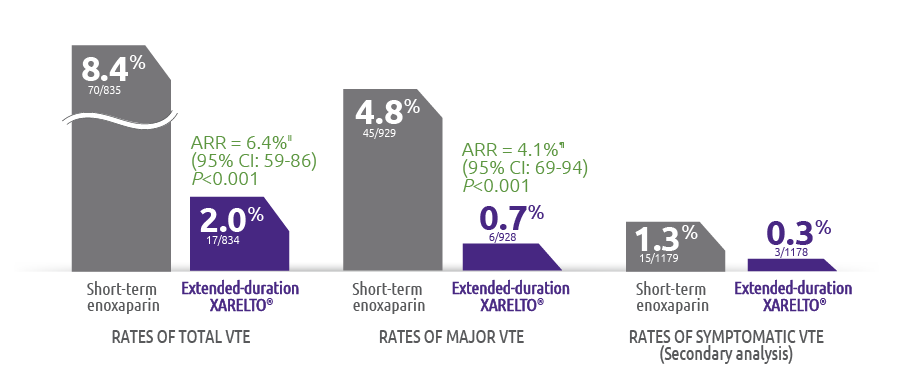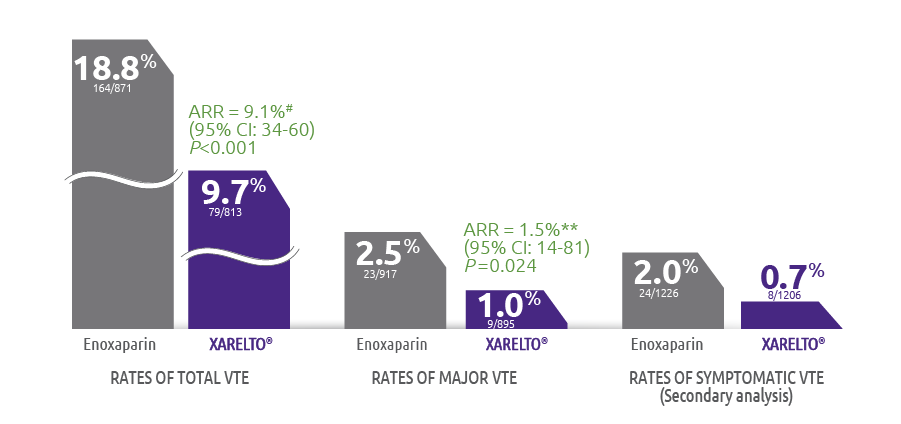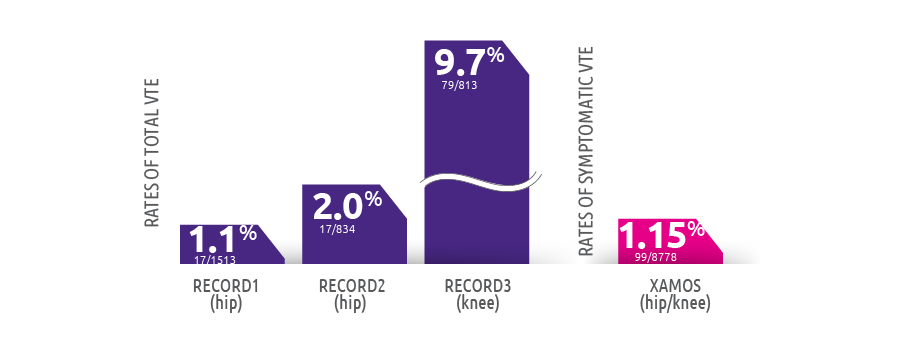For US Healthcare Professionals
SIGNIFICANTLY LOWER RATES OF TOTAL* AND MAJOR VTE† FOLLOWING HIP REPLACEMENT SURGERY1,2
RATES OF VTE IN RECORD1

- Results for the components of total VTE (XARELTO® versus enoxaparin): proximal DVT (0.1% versus 2.1%); distal DVT (0.8% versus 1.8%); nonfatal PE (0.2% versus 0.1%); death from any cause (0.3% versus 0.3%)
RATES OF VTE IN RECORD2

- Results for the components of total VTE (extended-duration XARELTO® versus short-term enoxaparin): proximal DVT (0.6% versus 4.8%); distal DVT (1.3% versus 5.2%); nonfatal PE (0.1% versus 0.5%); death from any cause (0.2% versus 0.5%)
- Due to differences in the duration of XARELTO® and enoxaparin treatment, study results may not be used to assess comparative efficacy



